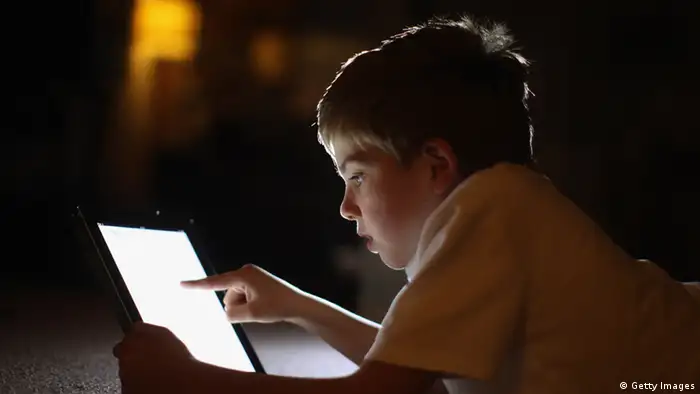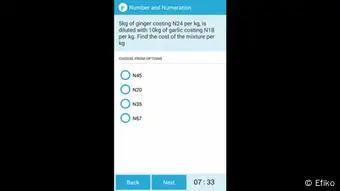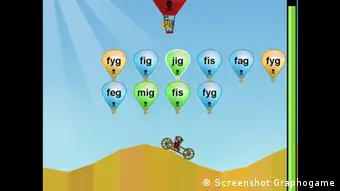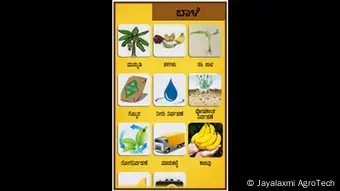Insights
What is m-learning?
M-learning, or mobile learning, is one of the new trend words in development circles. But what exactly is m-learning, how is it different from e-learning and how is it being used?
M-learning, what is it?
Mobile learning, otherwise known as m-learning, is about using mobile technologies for learning, teaching, accessing and exploring knowledge and information. While many see mobile phones as unlocking the real potential of m-learning in the developing world, m-learning is something that takes place on portable devices, such as tablets, iPads, Blackberries, Kindles, and even wearables and portable gaming consoles. Like all new concepts, m-learning doesn't yet have a hard-and-fast definition – some include notebooks, others don't.
Why the excitement about m-learning?
There are huge expectations about the potential of mobile learning in emerging economies. Half of the world's population now has a mobile subscription and one-third has mobile Internet. In many emerging markets, especially in Asia and Africa, the mobile phone is the primary way of accessing the Internet. In Nigeria, for example, only ten percent of people have a computer in their homes while nearly 30 percent have a smart phone and another 60 percent have a feature phone.
Is m-learning something I do at school or university?
Not at all. Like any kind of learning, m-learning can take place as part of a formal course or informally and it can involve structured or unstructured learning.
Think of a farmer wanting to learn about new irrigation methods, a migrant wanting to learn the language of their new country, or a teenager wanting to learn about safe sex. M-learning can help people acquire this knowledge either as part of a formal course of studies, or completely independently of any formal institution or structured course.
It's true that discussions of m-learning in the developing world often focus on the idea of improving education (whether primary, secondary or tertiary) by delivering content to students or teachers. But many believe m-learning is bigger than just the formal education sector. Rather it's about using mobile devices as a tool to enhance everyone's chance of learning, anywhere at any time.
Do I need Internet access to be an m-learner?
No. It depends how a particular m-learning project is set up. There are many examples of m-learning projects that use SMS and voice messages, while other projects try to keep Internet use to a minimum by creating apps that work offline after the initial download. Many structured m-learning applications though are Internet-dependent.
Can you give me some examples?
Sure. Below are some projects showing the diverse ways m-learning is being used – as part of learning in schools, to support learning outside of schools, and to support informal learning. (Please note: the list below is simply an illustration of what is possible; it’s not an endorsement of any of the projects or an indicator of their success).
Efiko is a mobile quiz app based on Nigeria's senior secondary school curriculum. Designed for use outside of schools to encourage learning, it comes with tutorials on a range of subjects, as well as quizzes.
Text2Teach in the Philippines provides teachers with a catalog of videos for teaching several grade 5 and 6 subjects, such as maths and science. Teachers download the videos onto their phones and then connect their phones to a TV or other screen to use the videos for in-class instruction.
Jayalaxmi AgroTech is a social startup that has created Android apps to help small-scale farmers in India access information in regional languages on specific crops (such as papaya, pomegranate or sugarcane). As many of the farmers have limited literacy, the organization creates apps heavy on audio-visuals, rather than relying on text to deliver information. Although farmers need to connect to the Internet to download the app, it then works completely offline.
Mobile Midwife in rural Ghana works on feature phones without Internet connectivity. Pregnant women sign up for the service with their community nurse. They are then sent SMS and voice messages at regular intervals with maternal and child health information (as well as reminders about pre- and ante-natal checkups). Depending on the stage of their pregnancy, women receive messages about issues such as the high risk of malaria to an unborn child, healthy eating and how to recognize the signs of miscarriage.
GraphoGame is a game that teaches children how to read by matching sounds with letters (it's being used on mobile phones and on computers so it's actually both an m-learning and an e-learning project). Children can progress through series of levels to advance from reading letters to reading words. Although it was originally developed in Finland for children with reading difficulties, it is now being used in a number of developing countries, from Zambia, Tanzania and Kenya to Chile. (Here is a link to a scholarly article on the use of GraphoGame in Africa; it's long but well worth the read.)
How is m-learning different than e-learning?
E-learning is about using electronic devices, primarily computers, to support learning. E-learning and m-learning are similar in that they can take advantage of a range of tools and technologies to deliver content, from SMS to voice and video messages, podcasts, videos, animations, games, quizzes, interactive chats..... the list continues.
But because people usually use computers and mobile devices in different ways and in different settings, e-learning and m-learning require different approaches. While you can read more about this here, http://info.shiftelearning.com/blog/difference-between-elearning-and-mlearning some of the differences include:
- Less information. Mobile devices have much smaller screens, which limits the type and amount of information they can display at once. M-learning content is often delivered in short nuggets of information.
- Shorter sessions. It can be a drain on the eyes and the brain accessing information for a long time on smaller mobile devices, such as a phone. Compared to e-learning, m-learning sessions are often much shorter.
- On Demand. People often use a mobile device to learn something when they need the information, or when they have a spare moment, rather than sitting down at a computer at set periods. E-learning is more likely to involve concentrated learning for later use. M-learning is about finding information for use now.
DW recommends
WWW links
- Date 11.03.2016
- Author Kate Hairsine
- Feedback: Send us an e-mail. Please include your name and country in your reply.
- Print Print this page
- Permalink https://p.dw.com/p/1IBav
- Date 11.03.2016
- Author Kate Hairsine
- Send us your feedback.
- Print Print this page
- Permalink https://p.dw.com/p/1IBav




